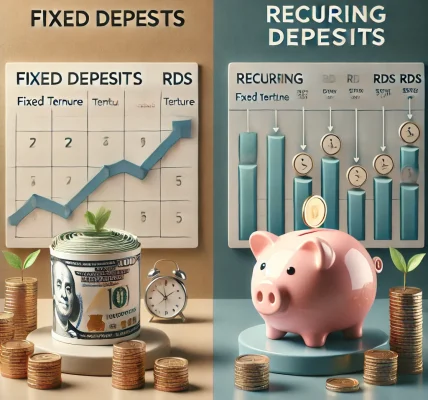Weddings are one of the most significant milestones in life. Planning for such an event requires not just careful attention to detail but also a solid financial strategy to ensure that everything goes smoothly without breaking the bank. With wedding expenses on the rise, saving for a wedding can be a daunting task. The good news is that with the right saving plan, you can save systematically, build a wedding fund, and have a stress-free celebration.
In this blog, we will guide you through practical steps to save for your dream wedding with the right savings plan, ensuring you stay on track without compromising on your other financial goals.
Step 1: Determine Your Wedding Budget
Before choosing the best saving plan, it’s essential to first determine your wedding budget. Start by calculating the estimated cost of all the major wedding expenses, including:
- Venue rental
- Catering and food
- Decorations and floral arrangements
- Wedding attire (dress, suits, etc.)
- Photography and videography
- Entertainment (DJ, live bands)
- Miscellaneous costs (invitations, transport, gifts, etc.)
Once you have a ballpark figure, add a buffer (usually 10-15%) for unforeseen expenses. Your wedding budget will be the foundation for how much you need to save each month.
Step 2: Set a Target Date
The timeline of your wedding plays a crucial role in shaping your saving plan. Whether you have a year or three years to save, knowing your target wedding date will help you break down your savings goal into manageable chunks. Setting a target date will also help you choose the appropriate savings instruments based on how much time you have.
Step 3: Choose the Right Saving Plan
Now that you have a clear budget and timeline, it’s time to select the right saving plan. Different saving instruments suit different needs, and choosing the right one depends on your risk appetite, time horizon, and financial goals.
1. Recurring Deposits (RDs) for Safe and Steady Growth
If you’re looking for a safe, low-risk investment with predictable returns, Recurring Deposits (RDs) are a great option. You can invest a fixed amount every month for a specific period, and you’ll receive a guaranteed return at the end of the tenure. The advantage of RDs is that they ensure disciplined saving, making them a good choice if you’re someone who finds it difficult to save consistently.
RDs are ideal if your wedding date is within 1-3 years, as they offer moderate returns with minimal risk. Additionally, they provide peace of mind since your savings are not exposed to market fluctuations.
2. High-Interest Savings Accounts for Flexibility
For those who prefer liquidity with relatively high interest, a high-interest savings account might be a good option. These accounts allow you to keep your savings easily accessible while earning a decent rate of interest. While the returns may not be as high as fixed investments like RDs, the flexibility and low risk make it an attractive choice for short-term goals like saving for a wedding.
It’s perfect for people who want to save consistently but need immediate access to their funds in case of an emergency.
3. Fixed Deposits (FDs) for Long-Term Stability
If you can afford to lock your savings for a longer period and are looking for a stable and secure investment, Fixed Deposits (FDs) are an excellent choice. FDs offer higher returns compared to savings accounts and are completely risk-free. If you’re planning your wedding in the next 2-4 years, an FD can provide you with capital protection and guaranteed growth.
Unlike RDs, where you have to contribute monthly, FDs require a lump sum deposit. However, their fixed interest rates can help you plan your savings efficiently over a more extended period.
4. Systematic Investment Plans (SIPs) for Higher Returns (Riskier Option)
If you’re looking for potentially higher returns and can tolerate some risk, Systematic Investment Plans (SIPs) in mutual funds are an option worth considering. SIPs allow you to invest small amounts regularly in equity mutual funds, which can generate higher returns over time compared to traditional saving instruments like RDs or FDs.
While SIPs are more volatile in the short term, they are better suited for long-term goals (3+ years). If your wedding is a few years away, SIPs can help you grow your savings more significantly. Just make sure to invest in balanced or low-risk funds if you are risk-averse.
5. Tax-Saving Instruments for Additional Benefits
Certain saving plans, like the Public Provident Fund (PPF), offer tax-saving benefits in addition to providing interest earnings. If your wedding is 5+ years away and you want to combine your saving goals with tax savings, PPF could be a good option. However, note that the money is locked in for 15 years, so it’s more suitable for long-term goals.
Step 4: Automate Your Savings
Consistency is key when saving for a wedding. To make sure you stay on track, automate your savings by setting up automatic transfers from your salary account to your savings account or investment plan. Automating your savings ensures you won’t be tempted to spend the money elsewhere, and it helps you stay disciplined in achieving your wedding savings goal.
Step 5: Track Your Progress Regularly
Once you’ve set up your savings plan, it’s important to track your progress. You can use mobile apps or online financial tools to keep an eye on your savings and assess whether you’re on track to meet your wedding goal. If you find that you’re falling short, adjust your monthly contribution or explore more lucrative investment options.
Step 6: Cut Unnecessary Expenses and Stay Focused
During the saving period, avoid unnecessary expenditures that could derail your wedding savings goal. Consider setting a budget for your regular monthly expenses, cutting back on dining out or non-essential purchases, and focusing on your ultimate goal. The more you save now, the less you’ll have to borrow or dip into your future finances when the big day arrives.
Step 7: Use a Wedding Savings Calculator
There are various online wedding savings calculators that can help you figure out how much you need to save monthly to reach your wedding savings goal. These tools can help you adjust your strategy as per your current savings rate, expected returns, and the timeline you have.
Conclusion
Saving for a wedding is a rewarding but challenging task. By following the steps outlined above and selecting the right saving plan, you can build a wedding fund that ensures you enjoy your special day without financial stress. Whether you choose Recurring Deposits, Fixed Deposits, or Systematic Investment Plans, the key is to start early, remain consistent, and track your progress.




